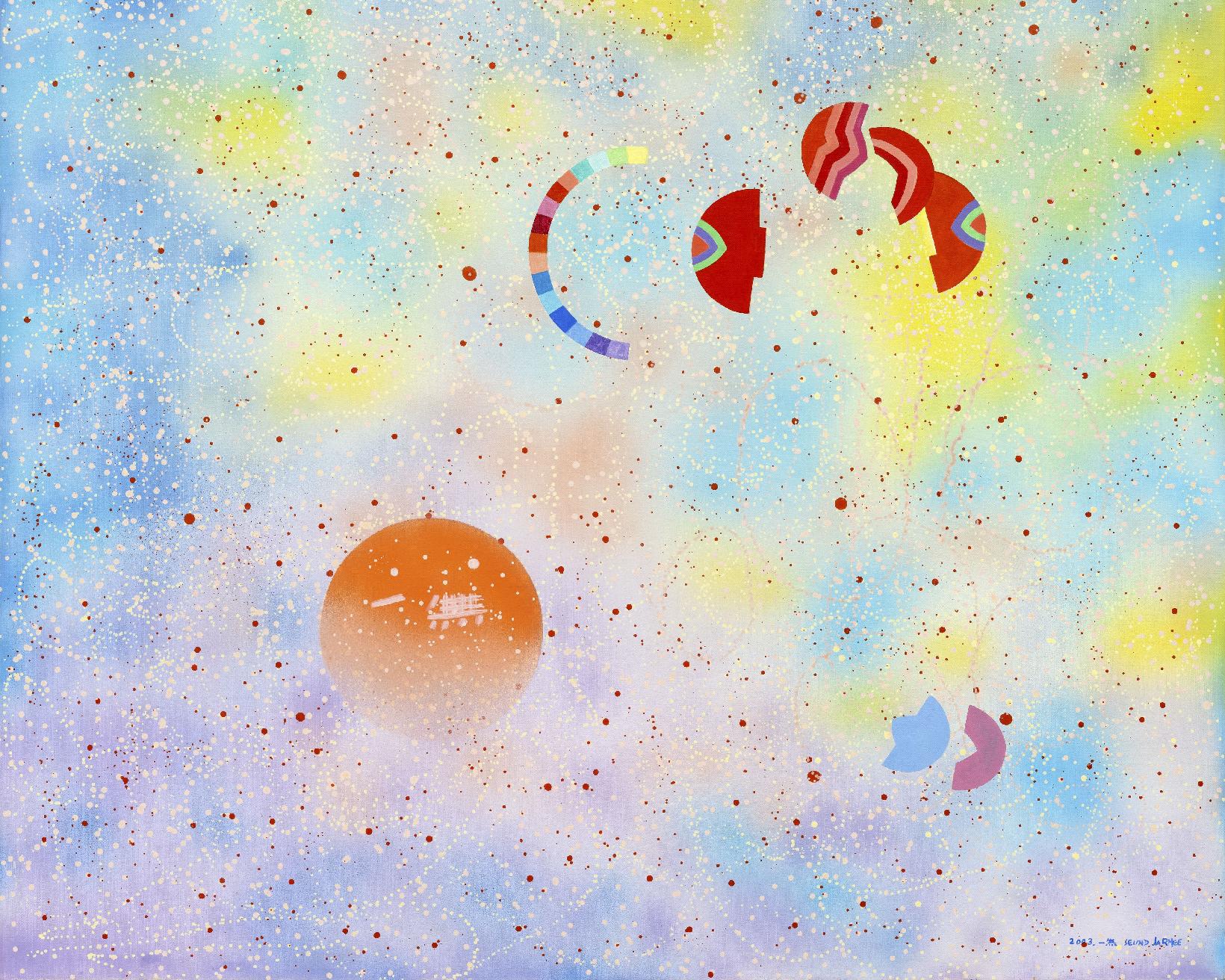
Seundja Rhee: Towards the Antipodes
April 20 - November 24
ArteNova, Campo San Lorenzo, 5063, Venezia, VE, Italia
Summer opening hours: 11 am - 7 pm (from 20 April to 30 September)
Autumn opening hours: 10 am - 6 pm (from 1 October to 24 November)
Closed on Mondays
The essence of my painting, I would say,
Is to capture the most marvelous scenery on this Earth.
Our space where material and object
altogethe r become a geometric “life”
The absolute?
– Excerpt from Seundja Rhee’s poem, 1980
KoRICA (Korean Research Institute of Contemporary Art), with the support of the Seundja Rhee Foundation and Gallery Hyundai, is pleased to present Seundja Rhee: Towards the Antipodes, a solo exhibition of Seundja Rhee (1918–2009). This exhibition is a Collateral Event of the Biennale Arte 2024, taking place at ArteNova (Castello 5063) from April 20 through November 24, 2024. Rhee is widely recognized as the only woman artist of her generation who has spearheaded Korean abstract art, alongside her contemporaries Kim Whanki and Yoo Youngkuk. Across six decades of her prolific practice, Rhee took to the East Asian theory of yin and yang and the five elements that make up the universe (Eumyangohaeng) as her conceptual bedrock. Such influences are demonstrated through her amalgamation of Eastern and Western artistic and cultural contexts after emigrating to France in 1951, which became her second home where she learned the canons of Western painting, while simultaneously fusing her academic studies with her unique philosophical sensibilities.
Seundja Rhee: Towards the Antipodes marks the first occasion after Rhee’s passing in 2009 that the artist’s solo exhibition is held in a country that is neither her Korean motherland nor her second home of France. Approximately twenty paintings spanning five decades of her career—from 1959 through 2008—are on view, providing a platform to reexamine Rhee’s continued formal experimentation and aesthetic evolution throughout the years, while at the same time steadfastly embracing the milieu of her time. Curated by Bartomeu Marí, an independent curator and writer, who was formerly Director of the National Museum of Modern and Contemporary Art, Korea (MMCA), Seoul, this presentation densely encapsulates Rhee’s lifetime career more than a centennial after her birth, introducing to the global audience of the Biennale Arte 2024 her intercontinental practice transcending the binaries of the East and West as far as seven decades ago. On the upcoming exhibition, Marí has stated: “The global art audience will discover an artist concerned with interpreting the world, the cosmos, in its relation to individuals and humans in general. As women artists have been traditionally ignored or undervalued, it is an occasion to rediscover how painting belongs to the great narratives of expression and sharing. The history of modern art in Korea is richer when Seundja Rhee’s work reaches a new level of global relevance.” Having constructed a singular creative language unrestricted to the prevailing modern and contemporary art movements in Korea and France, the latter of which she spent more than half of her life, Rhee’s biography epitomizes a life spent as the “other” and highlights the inextricable connection to the theme of this year’s Biennale Arte: Stranieri Ovunque – Foreigners Everywhere.
In 1951, amidst the Korean War, Seundja Rhee left for Paris, one of the main international art hubs and the capital of a country where Rhee would spend the following sixty years as a professional artist. In an attempt to overcome her tragic personal experience of becoming estranged from her three beloved sons, she enrolled in the Académie de la Grande Chaumière in Paris in 1953 with little to no prior experience in art, when she was already in her mid-thirties. Having encountered the language of visual art for the first time, Rhee quickly absorbed modern European influences. Unbound by the mission to convey the contemporary social milieu and ideologies that weighed on many other artists at the time, she focused instead on developing her unique artistic perspective and trajectory. Graced with strong determination and abounding ingenuity, she created not only paintings but also woodcut prints, sculptures, ceramics, tapestries, mosaics, and illustrated poetry books, and placed many notable works in public institutions.
From the mid-1950s, the artist began to identify nine distinct themes that would chronologically interlink her expansive body of work. The first three consist of: Figurative (1954–1956), which depicts solid compositions that reflect Rhee’s extensive training at Académie de la Grande Chaumière; Abstract (1957–1960), following an eye-opening trip to Amsterdam in 1956 that served as an impetus to overcome, or unlearn, the conventions of academic training by replacing representational objects with point, line, and plane; and Woman and Earth (1961–1968), featuring a pictorial plane invigorated with multiple layers of short, thick lines of vivid oil colors reminiscent of pointillism, or evoking the historical Korean craft of Hwamunseok (patterned woven sedge mats) or the tilling of soil. Quickly becoming the subject of widespread critical acclaim in Paris at the time, Woman and Earth bears Rhee’s self-studied medium of woodcut prints in the form of oil brushstrokes, resulting in an intense organic materiality rarely seen in pointillist paintings of Post-Impressionism. Woman and Earth serves as an iconic example of Rhee’s early formal language and is intensely redolent of her personal narrative—the longing for homeland, her three sons, and her mother. Such aching sentiments are reflected in titles of individual works such as A Mother I Remember (1962), Sweet Sunrays (1963), and Ojak-kio (1965) which, as poetic condensations, expand beyond their rudimentary function as titles into extensions of the works themselves.
As one of her key artistic concepts, “the Earth as Mother” would remain an axis that consistently informs Rhee’s later works. In the late 1960s, the artist began to actively travel between Korea, France, and the United States. Her visits to major cosmopolitan cities such as New York City and Washington D.C. led to the creation of the Superimposition (1969–1971) and City (1972–1974) series, which portrayed cities built upon the earth as sites gestating manmade energy. From the 1970s, she began to split her recurrent circular motifs, which first appeared in the Abstract series, into convex and concave semicircles, utilizing them as symbols of yin and yang, bridging paradoxical elements such as nature and machinery, death and life, the East and West, Korea and France. The artist continued to diligently employ this motif throughout the remainder of her career including the Yin and Yang, Timelessness (1975–1976) and Nature (1977–1979) series, where she appears to momentarily gaze into a transcendent time where she can reflect on her past, away from the Earth and cities of the present reality. Rhee’s awe of nature, as well as her merging of the yin and yang motif that constructs Korea’s taegeuk symbol, forges her continued path of abstraction informed by the methods and forms of Western painting she adopted during her time in France.
As a witness to, and at times a victim of, the discrimination amidst the tumult of both Korean and European 20th-century modern history and the still male-dominant art scene, transcendence of time and space became Rhee’s fuel to not only merge binaries but also to envision a utopian world. Road to the Antipodes (1980–1994) serves as a kind of memoir and diary of her travels between two countries at opposite antipodes that were equally important in the artist’s life, a fond yet sentimental record of the Alaskan landscape looked upon from a plane while flying between France and Korea. After settling in Tourrettes in Southern France in her later years, the artist’s gaze trailed upwards as she spent nights searching for constellations in the starry night skies, dreaming of a transcendent, infinite cosmos liberated from the territorial restrictions between Korea and France and of social constraints placed on her as a woman artist through her final works in the Cosmos (1995–2008) series.
Within the history of Korean modern and contemporary art, Seundja Rhee is considered the first generation of women abstract artists. Her precision, subtlety, determination, and innate aptitude in communication skills enabled the artist’s active engagement with the Parisian art community and supplemented critical elements that were often overlooked in the heretofore male-dominated history of art. At a time when Dansaekhwa and Minjung art prevailed in Korea, as did abstraction in the West, Rhee embraced influences from both Western and Eastern modern and contemporary art, achieving a unique formal language that amalgamated and unified these distinctive binaries. Furthermore, before the age of widespread internet, the artist had already begun to disseminate the East Asian theory of yin and yang to wider audiences. As such, she endeavored for a synthesis between the yin and yang, the East and West, the earth and the skies, and other dichotomies, amounting to the harmonious union between mankind and nature, along with the incorporation of cosmic landscapes into a transcendent, abstract pictorial plane. Even as Rhee experienced the traumas of the Japanese Occupation and the Korean War, as well as the inequalities of patriarchal social norms, throughout her life she remained dedicated to her aesthetic vision as both a mother and an artist, realizing a complete harmony between her life and art.
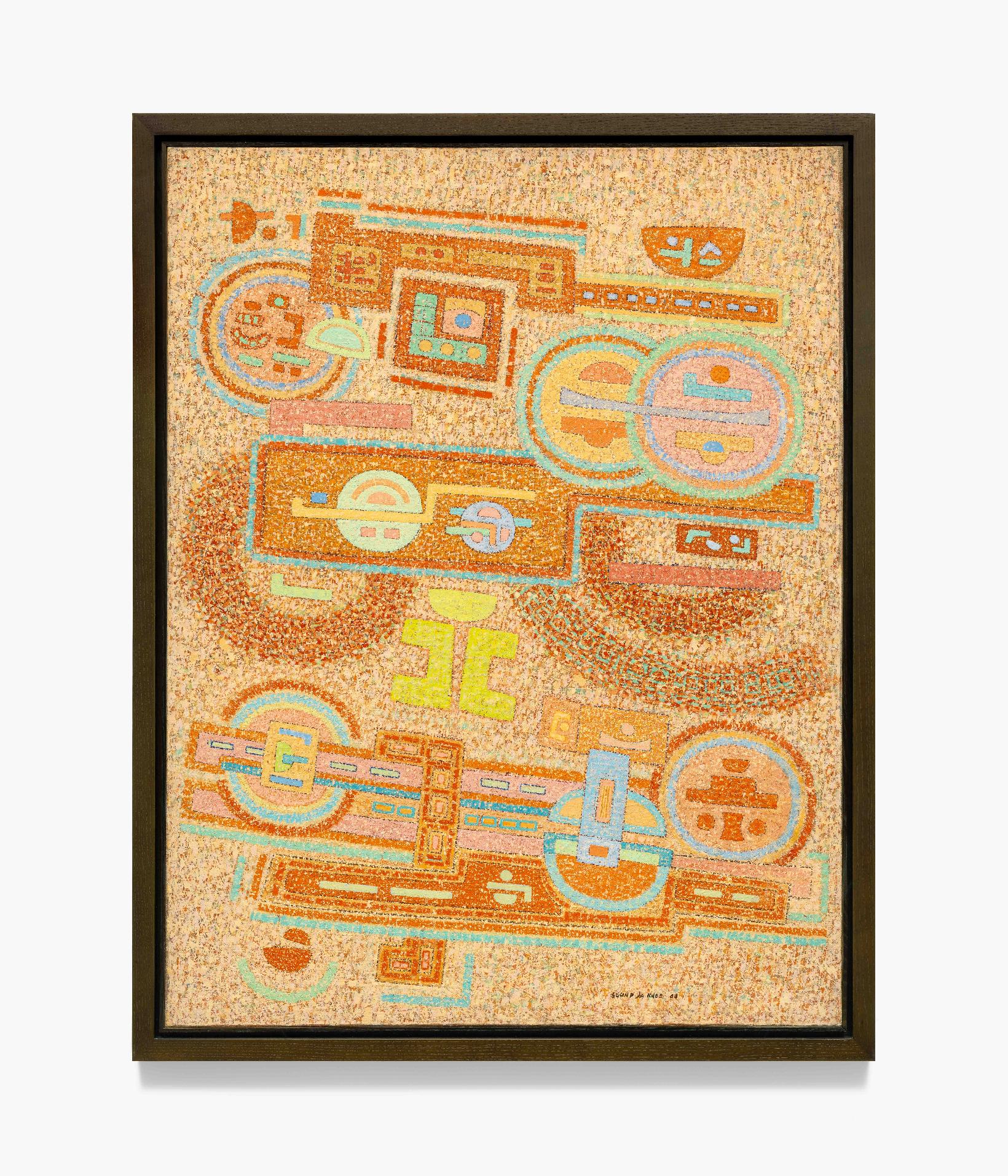
A World without Obstacle, 1968
Oil on canvas, 116 × 89 cm
Courtesy of Seundja Rhee Foundation
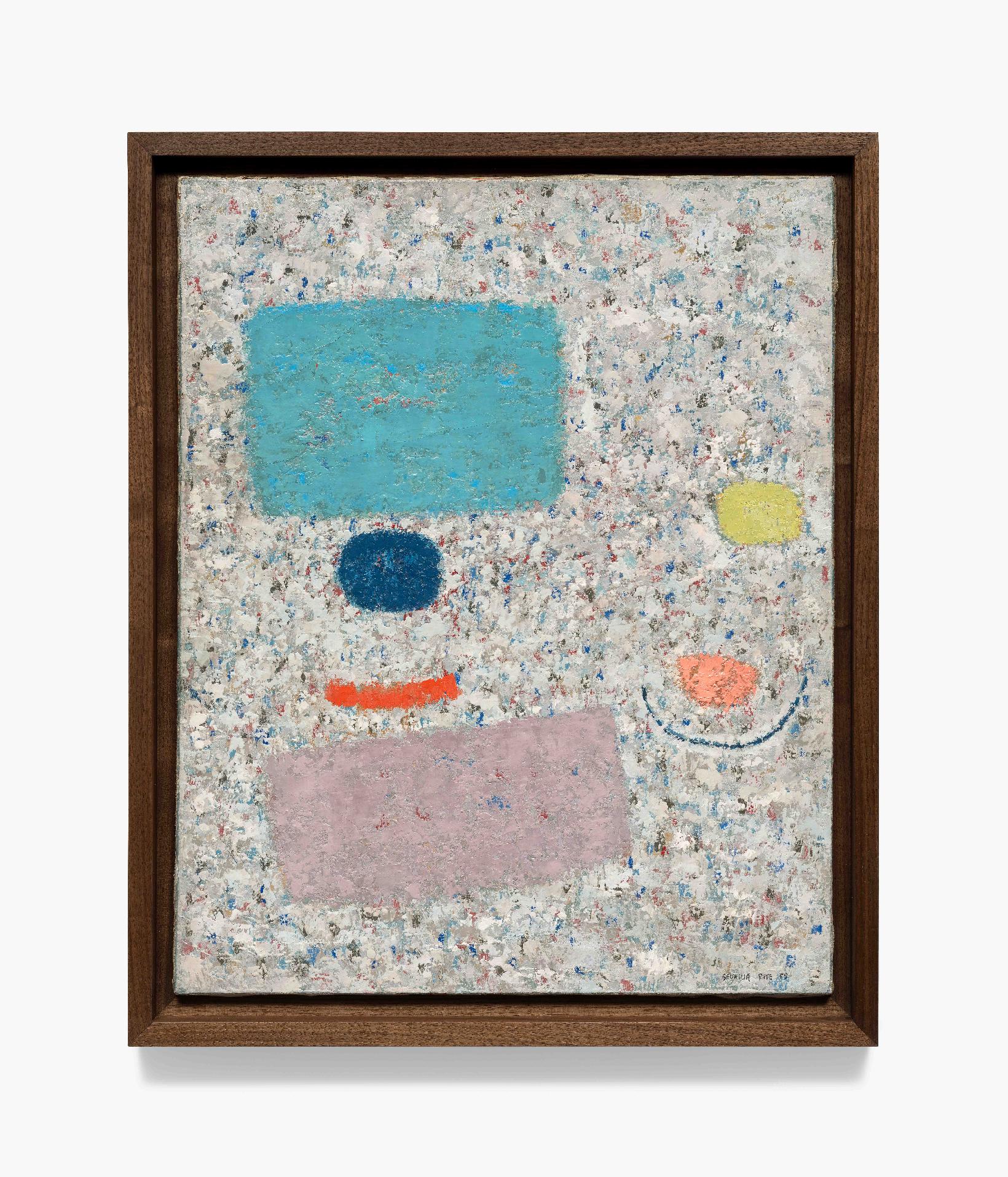
A Pearl of Sap, 1959
Oil on canvas, 81 × 65 cm
Courtesy of Seundja Rhee Foundation
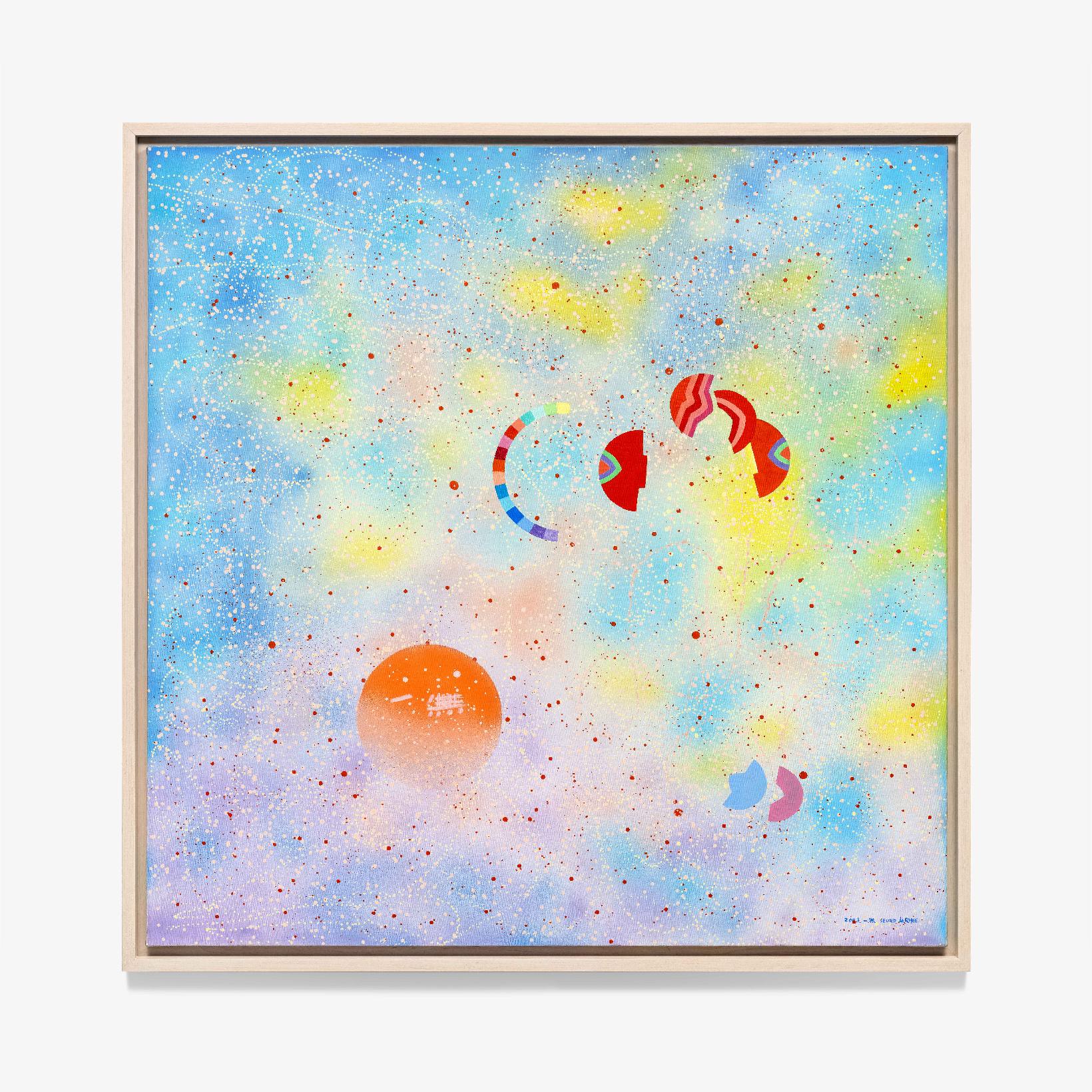
A City of Yong Keuk May, 2003
Acrylic on canvas
150 × 150 cm
Courtesy of Seundja Rhee Foundation
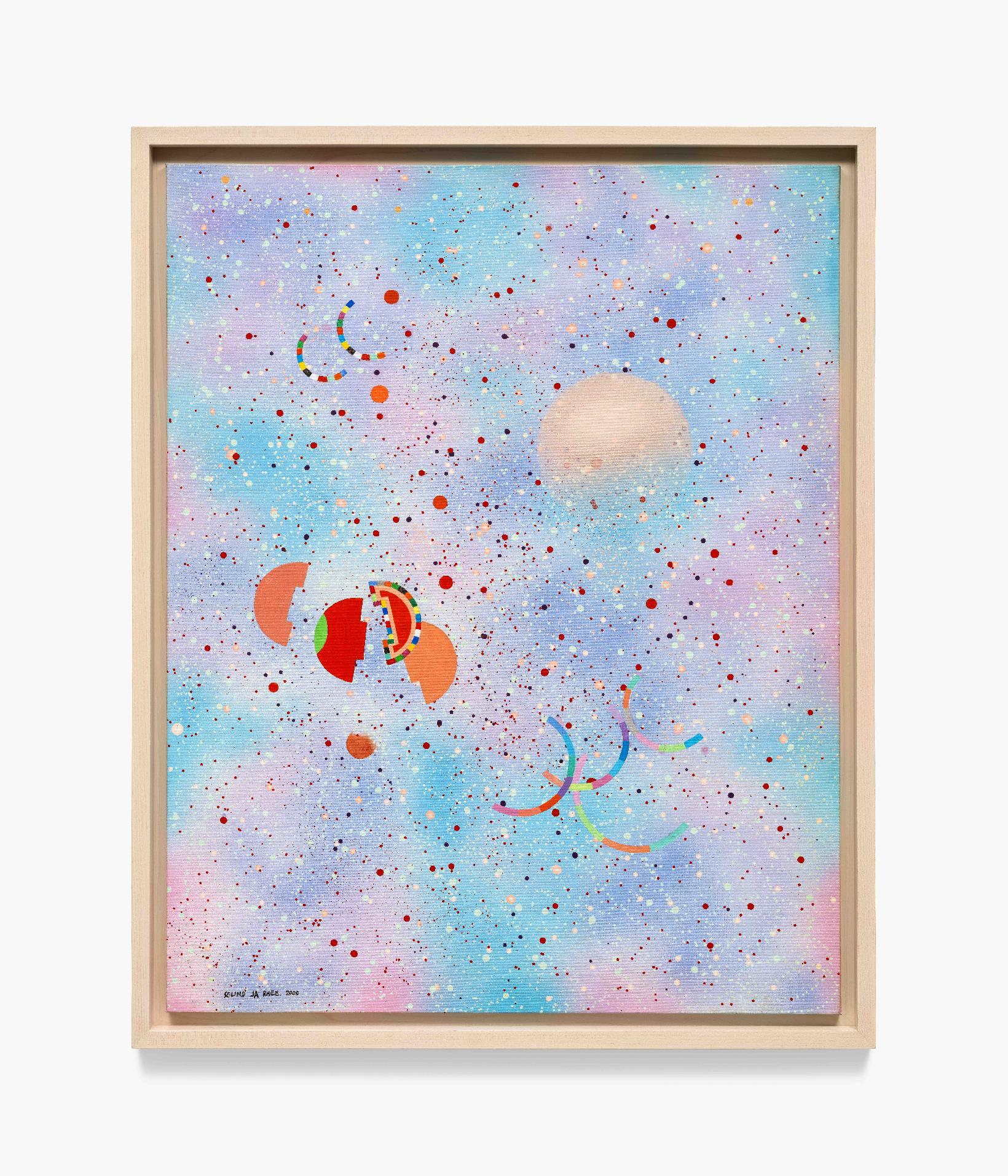
My Cottage of Venus June, 2000
Acrylic on canvas
92 × 73 cm
Courtesy of Seundja Rhee Foundation
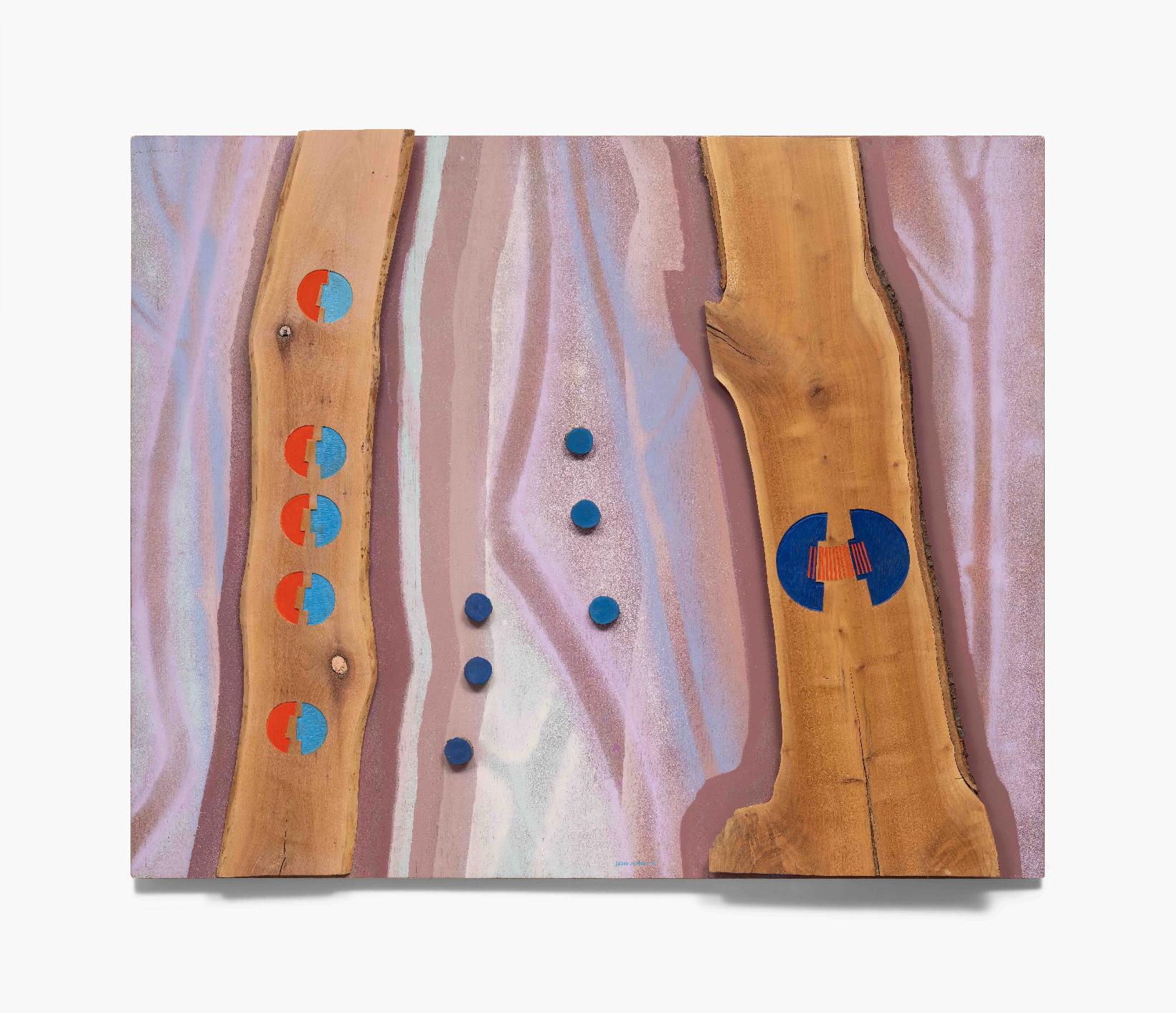
Timeless January No. 1, 1976
Acrylic on wood panel
130 × 160 cm
Courtesy of Seundja Rhee Foundation
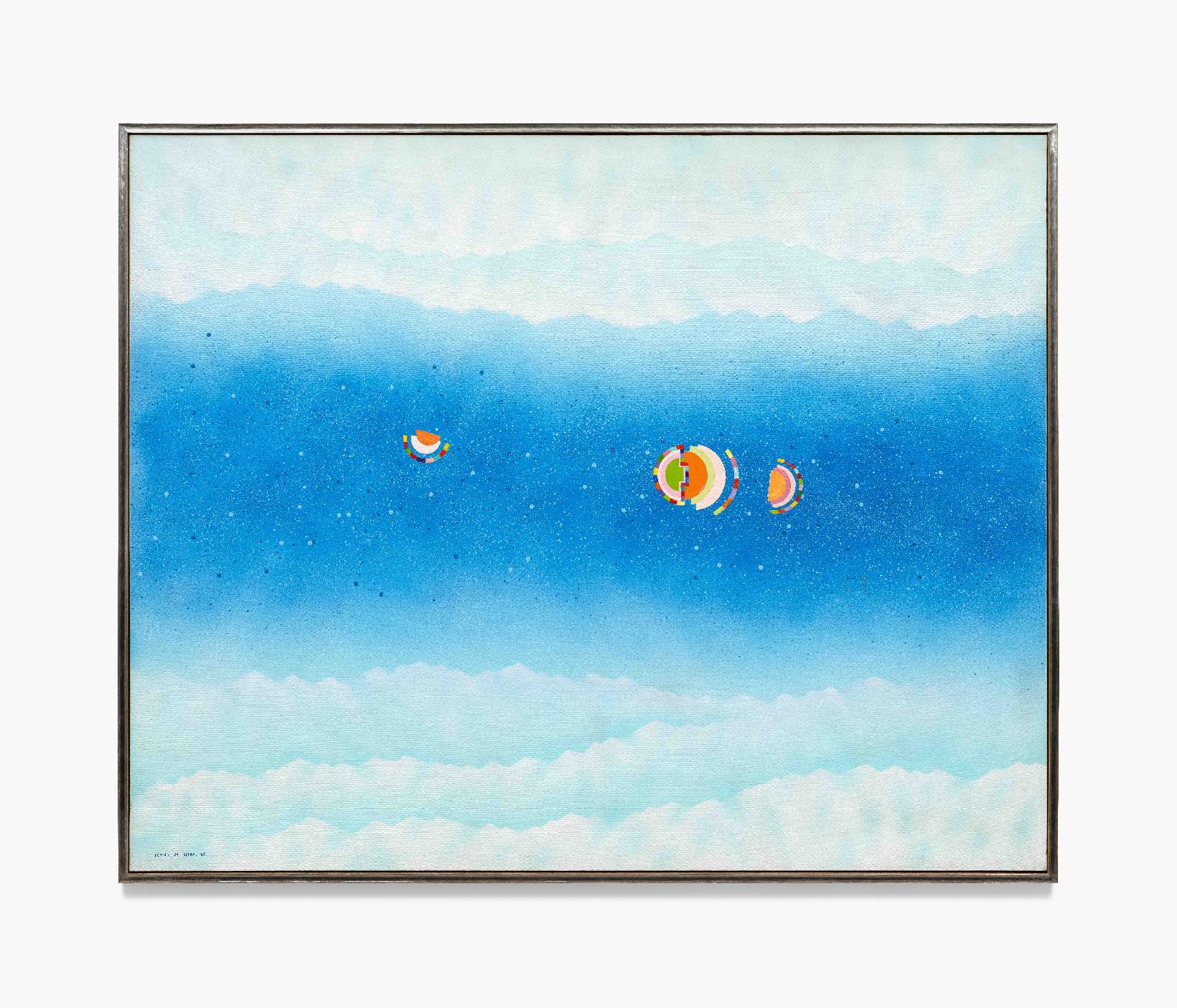
Road to the Antipodes July No. 2, 1981
Acrylic on canvas
130 × 162 cm
Courtesy of Seundja Rhee Foundation
《이성자: 지구 저편으로》
2024.4.20 – 11.24
아르테노바(ArteNova, Castello 5063, 베니스)
내 그림의 본질은
이 지구의 가장 멋진 풍경이라고 할까?
재료와 물체가 기하학적인 ‘생명’이 되는
우리의 공간. 절대(絕對)?
– 이성자의 시에서 발췌, 1980
한국근현대미술연구재단 KoRICA (Korean Research Institute of Contemporary Art), 이성자기념사업회, 그리고 갤러리현대는 2024년 베니스비엔날레 국제 미술전(Biennale Arte)의 공식 병행전시로 오는 4월 20일부터 11월 24일까지 베니스 아르테노바(ArteNova)에서 이성자(1918-2009)의 개인전 《이성자: 지구 저편으로》를 개최한다. 이성자는 김환기, 유영국과 함께 한국 추상미술의 선구자로 평가되는 유일한 여성 작가이다. 60년 화업 전반에 걸쳐 동양의 철학적 세계관인 ‘음양오행’의 개념을 뿌리로 삼은 이성자는 1951년 자신의 두 번째 고향인 프랑스로 이주해 그곳에서 익힌 서양화 형식에 고유의 정신을 녹여내며 동서양의 예술적, 문화적 배경을 혼합한 추상화를 탐구했다.
《이성자: 지구 저편으로》는 이성자가 작고한 해인 2009년 이후, 한국과 두번째 고향으로 여겼던 프랑스가 아닌 해외에서 열리는 첫 개인전이다. 1959년도 초기작부터 2008년도 후기작까지 대표작 20여 점을 선보이는 이번 전시를 통해 시기별 당대의 시대성을 담은 작업들을 선보이고, 끊임없이 형식적 실험을 지속한 이성자의 예술성과 그 미적 여정을 살피고자 한다. 《이성자: 지구 저편으로》는 전 국립현대미술관 관장직을 역임하고 현재 독립 큐레이터 및 평론가로 활동 중인 바르토메우 마리(Bartomeu Marí)가 기획했다. “전세계의 미술 관객들은 주변 환경, 세상, 우주를 개인과 사람과의 관계 속에서 해석해 내는 작가를 보게 될 것이다. 여성 작가들이 전통적으로 배제당하고 저평가된 가운데, 회화라는 매체가 표현과 공유의 서사에서 어떤 역할을 차지하는지 확인할 수 있는 자리가 될 것이다. 또한, 이성자의 작품세계가 세계 미술계에서 새롭게 발견되었을 때 한국의 근현대미술사는 더욱 풍성해질 것이다.”라고 전했다. 탄생 100주년이 지난 현시점에 이성자의 한평생을 아우르는 화업 연대기를 밀도 있게 담고, 무려 70년 전부터 동서양을 초월한 그의 독창적인 회화 언어를 세계적인 무대인 베니스비엔날레에서 선보이는 의미 있는 전시이다. 고향인 한국과 인생의 반 이상을 보낸 프랑스에서도 각국의 주요 근현대미술사 흐름에서 벗어난 독립적이고 독창적인 작품세계를 구축하며, 미술 안팎으로 ‘타자(他者)’의 여생을 보낸 이성자는 올해 베니스비엔날레 본전시의 제목 《Stranieri Ovunque - Foreigners Everywhere》의 의미인 ‘외국인은 어디에나 있다’와도 긴밀한 연관성을 갖는다.
1951년, 한국전쟁 당시 세계 미술의 중심지였던 파리로 떠난 이성자는 프랑스에서 60여 년을 전업 작가로 활약했다. 사랑하는 세 아들과 생이별을 해야했던 슬픈 개인사를 극복하기 위해, 1953년에 삼십 대 중반이라는 적지 않은 나이에 비전공자로 입학한 파리 그랑드 쇼미에르 아카데미(Académie de la Grande Chaumière)에서 처음으로 미술이라는 시각적 언어를 접한 그는 당시 유럽의 근대 미술을 빠르게 흡수한다. 시대적인 풍경, 이데올로기를 화면에 담아야 한다는 그 시기 작가들의 숙명에 구애받지 않고 이성자는 독자적인 작업 세계를 추구하기 시작한다. 결연한 의지와 넘치는 창의력을 바탕으로 회화와 목판화, 조각, 세라믹, 태피스트리, 모자이크, 시화집 등을 제작하고 여러 공공기관에 작품을 남겼다.
1950년대 중반부터 작가는 자신의 작업을 총 9가지의 명확한 주제로 구분한다. 그랑드 쇼미에르 아카데미 수업의 영향으로 단단한 구성과 개인적인 경험을 반영한 ‘구상’(1954-1956); 1956년 암스테르담으로의 여행을 기점으로 아카데미에서 학습한 관습을 탈피하려는 시도로 재현의 대상을 점, 선, 면으로 대체한 ‘추상’(1957-1960); 그리고 점묘법과 유사한 방식으로 짧고 굵은 선의 채도 높은 유채를 겹겹이 쌓아 올려 마치 화문석 돗자리를 직조하듯, 혹은 대지를 경작하듯 화면에 강한 생명력을 불어넣은 ‘여성과 대지’(1961-1968) 연작으로 파리 화단에서 호평을 받는다. 이 시기 연작은 그녀가 독학으로 터득한 목판화의 경험이 유화의 붓터치로 고안되며, 후기인상주의의 점묘법 화면에서 볼 수 없는 강렬한 유기체적 물성이 캔버스 화면에 발현된다. ‘여성과 대지’는 이성자의 초기 조형 언어를 가장 핵심적으로 보여주는 일련의 작업으로 만리타국에서 고국, 세 아들, 그리고 어머니에 대한 그리움이 담긴 개인적인 서사를 품는다. 이러한 서사는 〈내가 아는 어머니〉(1962), 〈감미로운 햇살〉(1963), 〈오작교〉(1965)와 같은 작품의 시적인 제목에서도 엿볼 수 있다. 따라서 그가 붙인 작품 제목은 단순한 제목의 기능을 넘어 함축적인 시구처럼 ‘작품의 연장’으로 확장된다.
작가의 주요한 세계관 중 하나인 ‘어머니로서의 대지’는 이후 연작들에서 지속적으로 회화의 중심축 역할을 한다. 1960년대 후반부터 본격적으로 한국, 프랑스, 미국 등 대륙을 오갔던 이성자는 뉴욕, 워싱턴 D.C.와 같은 대도시를 경험한 바탕으로, 대지 위에 구축된 도시를 인공적인 에너지를 잉태한 장소로 해석하는 ‘중복’(重複; 1969-1971)과 ‘도시’(1972-1974) 연작을 남긴다. 1970년대, 작가는 ‘추상’ 연작 시기부터 활용하던 원의 형태를 쪼개진 듯한 오목하고 볼록한 두 반원으로 그리고, 이를 자연과 기계, 죽음과 생명, 동양과 서양, 한국과 프랑스 등 상반된 요소들을 결합하는 음양의 기호로 표현한다. 작가는 이 표상을 이후 ‘음과 양, 초월’(1975-1976), ‘자연’(1977-1979) 시기에 적극 활용하며 잠시나마 현실 세계의 대지, 도시로부터 초월적 시간으로 시선을 돌려 그간의 여정을 되돌아본다. 자연을 향한 경외감과 더불어 한국 전통 태극 문양에 뿌리내린 음양 모티브를 프랑스에서 익힌 서양화 기법과 형식에 담아내는 특유의 추상화 화면을 지속해서 탐구한다.
한국과 유럽의 격동하는 근현대사와 남성 중심의 화단에서의 차별을 피부로 경험한 작가에게 시공간의 초월이란 개념은 ‘상반되는 요소들의 결합’에서 더 나아가 유토피아적 세계를 구축하기 위한 촉매제가 된다. ‘지구 반대편으로 가는 길’(1980-1994)은 작가가 프랑스에서 한국으로 가는 비행기에서 내려다본 알래스카의 풍경에서부터 시작하여 지구 정반대 편에 위치한, 그의 인생에서 주요한 두 국가 사이를 오가는 행적을 그려낸 일종의 회고록이자 일기장이라 할 수 있다. 프랑스 남쪽 지방 투레트(Tourrettes)에 거주할 당시 이성자는 하늘의 바깥, 대지와 지구를 초월한 세계 ‘우주’(1995-2008) 연작을 작업한다. 밤하늘의 별들을 바라보며 작가는 한국과 프랑스라는 땅과 영토의 한계, 더 나아가서는 여성 작가로 그녀를 옭아매는 한계에서 벗어나 보다 초월적이고 자유로운 우주의 풍경을 담아낸다.
한국 근현대미술사에서 이성자는 1세대 여성 추상 화가로 평가된다. 이성자의 섬세함, 예민함, 용기, 그리고 천성적인 소통 능력은 파리 미술계와의 적극적인 교류로 이어지며 남성 중심의 세계 미술사에서 누락된 부분을 보완하는 예술 세계를 구축했다. 한국에서 단색화와 민중미술, 서구에서 추상미술이 주요한 동향이던 시기에 이성자는 동서양의 근현대미술 동향의 특징을 동시에 아우르며 동서양이라는 이분법적인 세계를 융합하고 합일하는 독특한 조형 언어를 구축한 작가이다. 또한, 인터넷이 공용화 되기 한참 전부터 동양의 음양론을 국경의 경계 너머의 관객에게 사유하도록 이끈 역사적인 미술가이다. 음과 양, 동양과 서양, 하늘과 땅 등의 이분법적 관계를 융합적으로 표현하고, 인류와 자연의 합일을 추구했으며, 나아가 지구 바깥의 우주의 풍경을 화면 안에 담아 숭고하고 초월적인 추상 화면을 완성했다. 일제강점기와 한국 전쟁을 경험한 세대로 가부장적 사회의 부조리함을 몸서리치게 겪으면서도 ‘어머니’이면서 미술가로서의 비전을 담아내는 미학을 추구했으며, 삶과 예술이 조화된 작품 세계를 완성해 냈다.